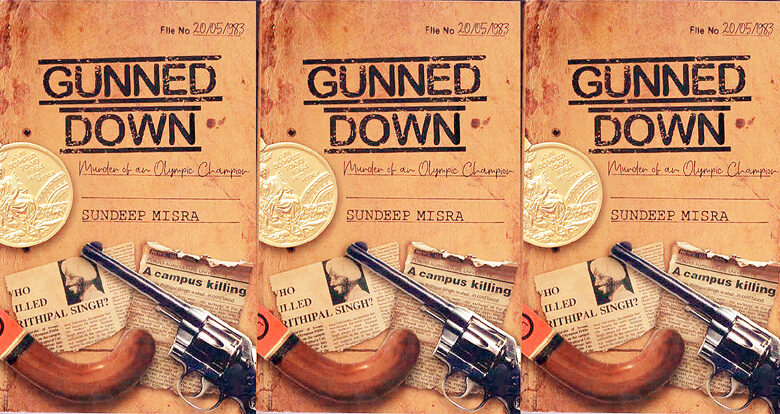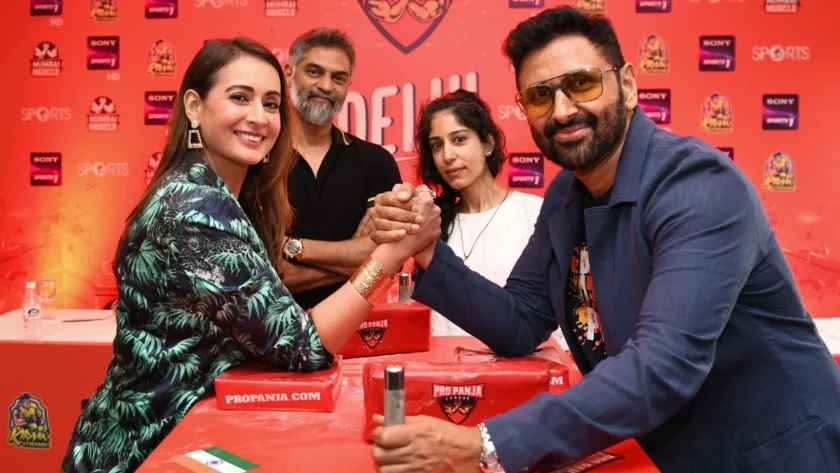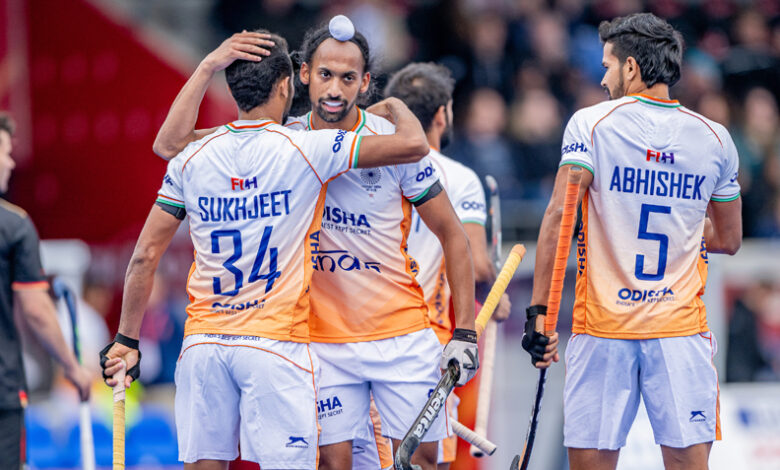Chandigarh: In the pantheon of Indian hockey, a sport that once symbolized the nation’s pride and prestige on the world stage, few names resonate with the same force as Prithipal Singh. Called the “Lion of Indian Hockey” for his fearless play and unbending resolve, Singh’s career was one of towering triumphs and haunting turbulence. Yet his life story does not end in the glittering glow of Olympic medals. It concludes in a swirl of campus politics, personal feuds, and a violent, tragic end that remains one of the darkest chapters in Indian sporting history.
Sundeep Misra’s new biography, Gunned Down: Murder of an Olympian, reconstructs this tale of brilliance and betrayal, reviving the memory of a man who carried Indian hockey on his broad shoulders but fell victim to forces beyond the field. It is both a celebration and an elegy—a reminder of India’s sporting highs and the shadows that engulfed its heroes.
The Making of a Legend
Born in 1932 in Nankana Sahib (now in Pakistan), Prithipal Singh grew up amid the upheaval of Partition. Like many families uprooted from Punjab, his early life was shaped by displacement, resilience, and the drive to rebuild. He gravitated toward hockey, a sport that was at the time the heartbeat of India, where Dhyan Chand’s wizardry had already carved an immortal legacy.

But Singh’s path was not one of artistry; it was of raw power. A full-back known for his thunderous penalty corners, he struck fear into opponents and inspired confidence in teammates. He was tall, muscular, and uncompromising—attributes that made him an enforcer on the field. His playing style contrasted with the finesse-driven Indian game, but it was precisely this force that gave India an edge during the 1960s, a decade when the dominance of Indian hockey was being challenged by European teams.
By the time he made his Olympic debut in Rome 1960, Singh was already carving a reputation as a defensive wall and penalty corner specialist. Though India lost the final to Pakistan in a historic defeat—their first-ever loss in Olympic hockey—Singh stood out as a fierce competitor.
The Golden Years
Prithipal Singh’s crowning moment came at the 1964 Tokyo Olympics. The final against Pakistan was a replay of the rivalry that defined Asian hockey. It was Singh’s resolute play in defense and his commanding presence that helped India reclaim the gold, edging Pakistan 1-0 in a nerve-wracking contest.
Tokyo established him not just as a vital cog in the team, but as one of the most feared defenders in the world. His penalty corner flicks, driven with unerring accuracy and ferocity, became legendary. He earned the nickname “King of the Penalty Corner,” a precursor to modern-day drag-flick masters.
Four years later, in Mexico City 1968, Singh added a bronze medal to his tally. It was not the result India had hoped for, but by then Singh had firmly etched himself as one of the greatest Olympians the country had produced. Few players in hockey history could claim the kind of influence he wielded in three successive Olympics.
The Man Behind the Medals
Misra’s biography, however, is not confined to Singh’s exploits on the field. It delves into his personality—at once magnetic and polarizing. Singh was admired for his bravery and work ethic but feared for his temper and stubbornness. He was not a diplomat in a game that required camaraderie. His bluntness and unwillingness to compromise often placed him at odds with teammates, coaches, and administrators.
When Singh retired from competitive hockey, he entered academia, joining Punjab Agricultural University (PAU) in Ludhiana. He was not content to fade into obscurity; his reputation as a disciplinarian and strong-willed figure carried over to his role as an academic and sports official. But what worked on the field did not translate easily to the volatile atmosphere of university politics.
From Hockey Field to Campus Battleground
Punjab in the 1970s was simmering with political unrest, student agitations, and the early rumblings of militancy. Universities were hotbeds of factionalism, where student unions often clashed violently, and administrators found themselves in the line of fire.
Prithipal Singh, with his no-nonsense approach, tried to impose discipline at PAU. He became Director of Sports and soon acquired both admirers and enemies. His refusal to bend to political pressures or accommodate vested interests alienated many. Student groups resented his strictness, while colleagues whispered about his authoritarian streak.

According to Misra, Singh underestimated how different the hockey turf was from the treacherous ground of campus politics. His assertive personality, once an asset, became a liability in an environment governed by intrigue and vendetta.
The Day of Reckoning
On March 20, 1983, violence spilled over at Punjab Agricultural University. A group of armed students confronted Singh on campus. Shots rang out. The man who once embodied the indomitable spirit of Indian hockey lay bleeding. Prithipal Singh was dead, assassinated in broad daylight at the age of 51.
His murder shocked the nation. An Olympian, a national hero, reduced to a casualty of local disputes. The irony was unbearable: a man who had battled the fiercest rivals on the hockey field, who had carried India’s hopes in the Olympics, felled not by a foreign opponent but by the bullets of his own countrymen.
Investigations followed, arrests were made, and trials dragged on, but justice remained elusive. The case became emblematic of the lawlessness that had seeped into Punjab’s institutions during that turbulent era.
Legacy of a Fallen Hero
Prithipal Singh’s story is a cautionary tale about the fragility of glory. He was a man who brought honor to India, who stood tall at a time when Indian hockey was losing its shine, and yet his post-sporting life descended into tragedy.
Sundeep Misra’s Gunned Down does not merely narrate a biography—it interrogates the failure of Indian institutions to protect their heroes. It asks why men like Singh, who gave their youth to the nation, are often left to fend for themselves once their careers end. His violent death underscores the vulnerability of athletes once the medals stop coming and the spotlight fades.
Today, Singh’s name is not as widely remembered as Dhyan Chand’s or Balbir Singh’s, but among those who know the game’s history, he remains a towering figure. His penalty corner strikes still echo in hockey lore, and his life story—half triumph, half tragedy—remains an indelible part of India’s sporting narrative.
Why This Story Matters Now
At a time when Indian hockey is experiencing a revival, with the men’s team winning an Olympic medal in Tokyo 2020 after 41 years, revisiting Prithipal Singh’s life is both timely and necessary. It is a reminder of the sacrifices and struggles of those who kept the sport alive in leaner years. It is also a sobering reflection on how India treats its sporting icons beyond the limelight. Singh’s journey from Olympic podiums to a bullet-ridden death on a university campus forces us to confront uncomfortable questions about memory, honor, and neglect.
A Life Larger Than Sport
Prithipal Singh’s life was like one of his penalty corners—fast, fierce, and unforgettable. He was a man who gave his all to hockey, who played with a fearlessness that made him a global icon. But he was also a man undone by his uncompromising nature, navigating a world that did not play by the same rules of courage and discipline.
Sundeep Misra’s Gunned Down brings his story back into national consciousness, ensuring that Singh is not remembered only for the way he died but also for the way he lived and played. His story is not just about hockey; it is about India itself—its glories, its fractures, and its forgotten heroes.





